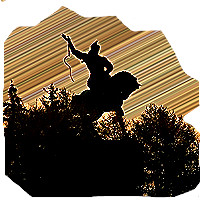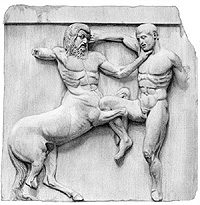[Crackpot comments in brackets.]
Hey James,
I hope you’re doing well.
[Thank you. Just got back to boxing, still can't walk, but boxing is a kind of limping.]
I recently read an old boxing manual written by golden gloves coach Edwin Haislet. It’s really good overall but I can’t get over the stance he advocates. Jack Slack explains it here:
[Considering Jack Slack beat Broughton badly, using a hammer fist to cut him up, and that butchers usually have short life spans, I am surprised that Slack has lived some 270 years. I am glad to find that he is a writer. I cannot tolerate website fonts, so will go on my memory of that manual read in about 2002, and comment between your takes below.]
://fightland.vice.com/blog/punching-with-the-toes-the-secrets-of-hitting-hard
Basically your lead foot is pointed 45 degrees inwards while your rear foot and torso are forward facing. The lead leg is straight with the foot flat while the rear leg is bent and the heel slightly raised. I understand Jack Slack’s argument that this stance preloads the hip to power a lead hook, but it seems to me that there’s a sacrifice in mobility.
[The defensive advantage is you are higher, taller in the front. The draw back is you open up your center line. This weakens the power in the rear hand, as the shoulder is already committed and the upper body power assist foreited. However, this makes the rear hand quicker. If you are looking to lead with the rear hand, this is good. I have been boxing this way due to having a torn hip and a compressed lower back on the right side.]
Haislet even says,
“Footwork is a comparatively new development in boxing. In the early days of Greece, to dodge or move away from a blow was considered evidence of cowardice."
[This is highly incorrrect. See my books Gods of Boxing. Only leaving the open skamma, stepping out was cowardice, to the point where you would be judged as having submitted. The ancient foot work was more important than today, as you could not go too far back and must circle, spearing the eyes was legal, and in light of the fact that there were no weight classes.]
In England, footwork was used very little before the time of John Jackson (1768) and it was not until the beginning of the Nineteenth Century and the school of Belcher, Bendigo and Sayer that moving in the ring was used as a means of defense as well as a means of conserving energy.
[This began as a form of hybrid wrestling and fencing. Use of cleats for fighting on turf highly retarded footwork until bouts began to be fought on barges, streets and stages again in America, This brought the "sparrer" the glove guy, with the great gym footwork out into open competition. In England, while bouts were on turf, the man who could step and drag like a sliding demon in the gym, had about as much chance against a bigger man on turf as a boxer does in the MMA cage. Understand, that the Brits around 1809, when Pancratia was written, saw the prize ring as an analog of Pankration more than Pugmakhia.]
Footwork developed with the use of the glove because it called for speed and skill. Today, the essence of boxing is the art of moving, moving in to attack or defend, moving out to defend or ‘pull off’ balance. The ability to move at the right time is the foundation of great skill in boxing”
[Yes, of course, the art evolved.]
Is this a relic of London Prize Rules? It seems like the stance might have an advantage for the cross-buttocks throw. I would think a modern, more mobile boxer could pick apart someone fighting this style, even in London Prize rules. Am I missing something? Maybe you talk more about this in one of your books?
[This is a good southpaw gambit, since you lead with the right. The straight but angled lead food sets you up for a safety punch to a weak pivot against a harder hitter, as you can bend that knee as you pivot on the heal to 90 degrees off his lead. As an orthodox guard, with both men leading with the left, this makes you taller up front and quicker from behind, a decent catch weight guard for blind jab, to sneaky right, to safety jab or up jab. This would be good for the clinch and throw, and also, the up jab, which was a KO blow in bareknuckle as the orbit and eye were the target. See my book The First Boxers for the hand and orientations and guards.]
Take care,
Trad Brad
[Thanks again, Brad.]











